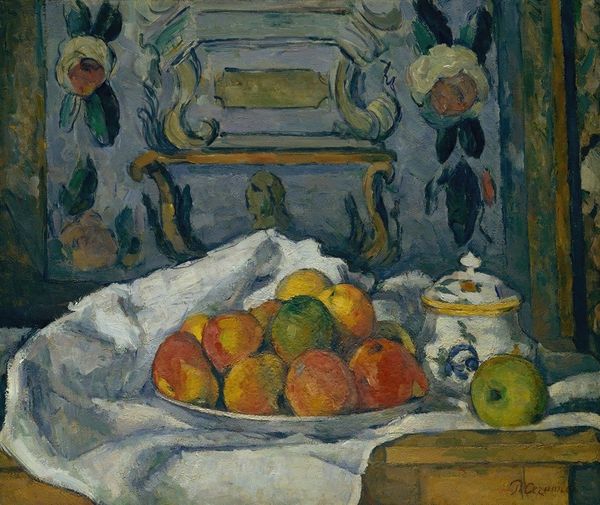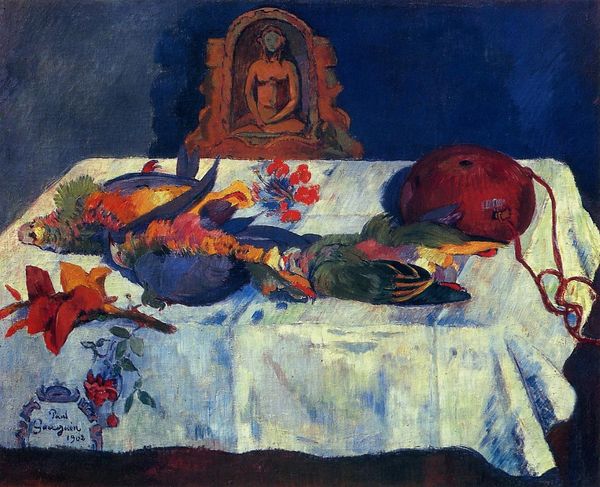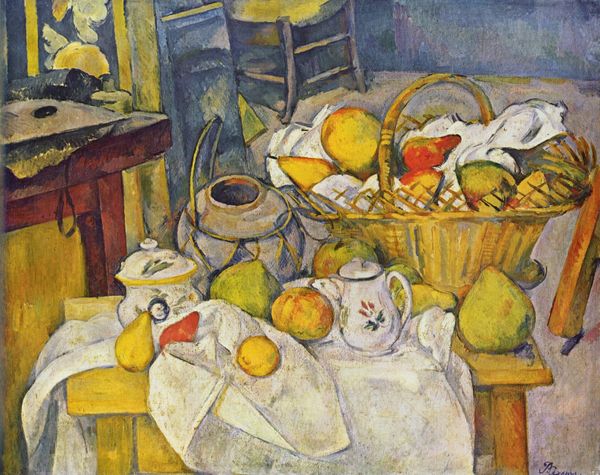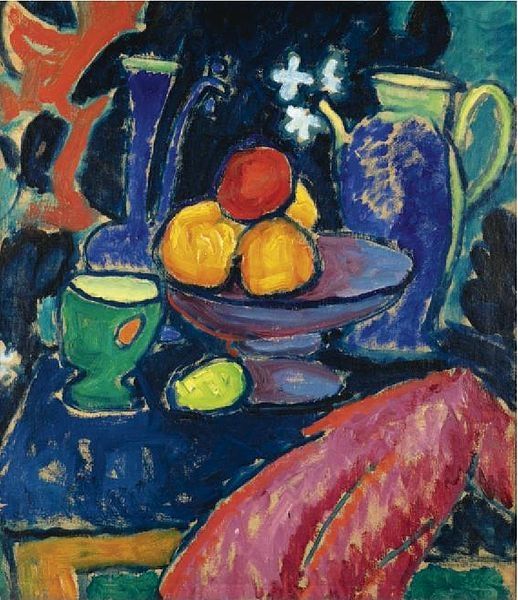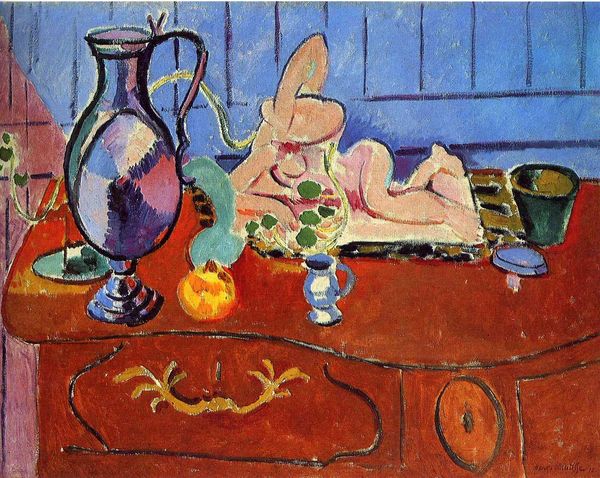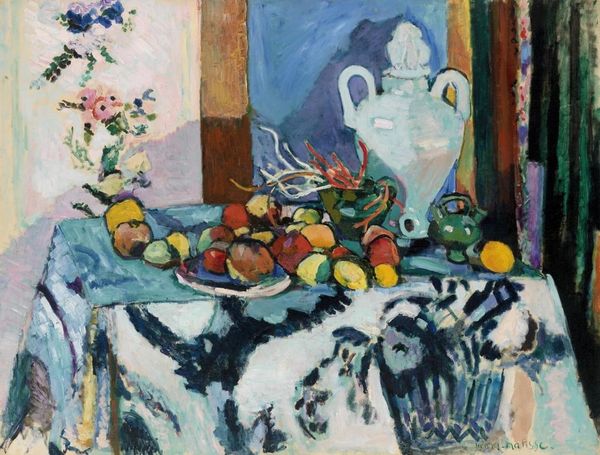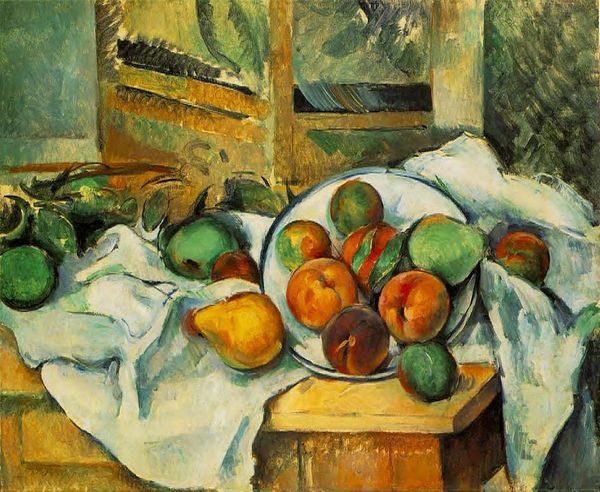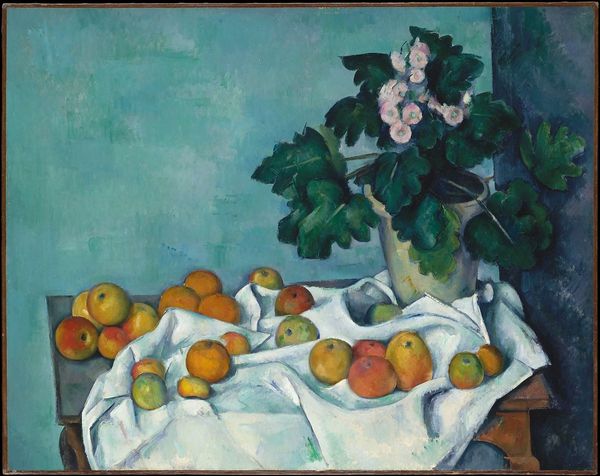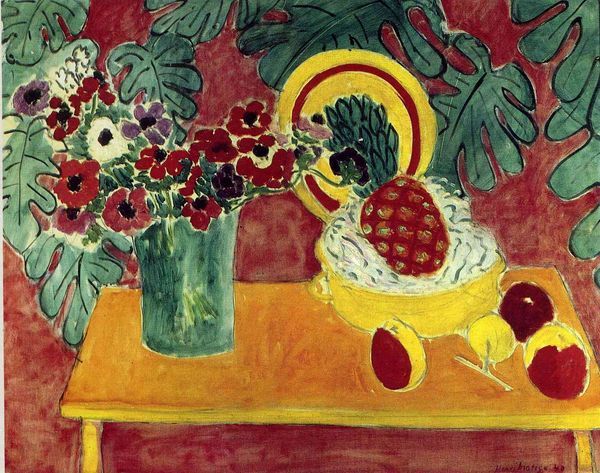
oil-paint, textile
#
fauvism
#
oil-paint
#
landscape
#
textile
#
oil painting
#
geometric
#
expressionism
#
expressionist
Dimensions: 115 x 161.9 cm
Copyright: Public domain US
Editor: Looking at André Derain's "Still Life on the Table" from 1904, it's hard to ignore the almost chaotic arrangement of objects. The draped cloth really dominates the scene. It feels almost theatrical. As a Historian, what grabs your attention first about this piece? Curator: What I see is a Fauvist challenge to the established salon culture of Paris. Derain is flaunting academic rules – perspective is distorted, colors are aggressive, almost clashing. Do you notice how the vibrant colors don't accurately reflect reality? Editor: Absolutely, the oranges especially seem to vibrate against the cooler tones. What effect do you think that has on the viewer? Curator: It forces us to consider the role of emotion and subjectivity in art. The Fauves, including Derain, were making a clear statement. They wanted to break free from representational accuracy and express inner feelings. Think about the rising nationalism and societal shifts occurring during that period; what role might this artistic shift play? Editor: It seems almost rebellious, a visual rejection of the status quo. The wild colors mirror a wider cultural upheaval? Curator: Precisely! Consider also the rise of the *avant-garde* movement, a deliberate distancing from mainstream institutions like the *Académie des Beaux-Arts*. Derain’s choice to focus on commonplace domestic items only further democratized his subject matter, steering clear of overtly academic, history based topics. Editor: I hadn’t thought about the social context like that. It makes the painting so much more than just fruit and dishes. Curator: Right. It makes us ponder, “How did this brazen approach challenge the traditional art world?” "What was Derain saying about the function of art within society?" Editor: Thanks, seeing the painting through that historical lens really illuminates its radical nature! Curator: And for me, your fresh perspective helps me reconsider the initial shock this painting must have caused at the time.
Comments
No comments
Be the first to comment and join the conversation on the ultimate creative platform.
